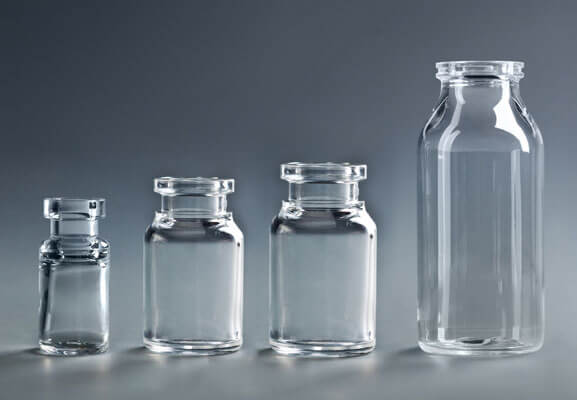Exosomes (diameter 30–150 nm), as key mediators of intercellular communication, rely on the integrity of their surface proteins (such as CD63 and CD81) to maintain biological activity and therapeutic efficacy. However, traditional glass vials, due to their high surface energy (>40 mN/m) and silicone oil coating, are prone to protein adsorption (>0.3 μg/cm²), resulting in ≥10% loss in exosome recovery—a major bottleneck in industrial applications. COP vial, with their surface energy (30–35 mN/m) and non-polar inert surface characteristics, control protein adsorption to ≤0.05 μg/cm², providing an almost zero-loss storage environment for exosomes.
Polymer Vial 2ml 5ml 10ml for cell and gene therapies
I. Mechanism and Experimental Validation of Low Protein Adsorption
1. Dual Barriers of Material Chemical Inertia
Molecular-level barrier: The saturated hydrocarbon structure of COP contains no heavy metal ions or plasticizers, preventing leachables (such as alkali metal ions) from catalyzing oxidative degradation of exosomal membrane proteins. GC-MS tests show that the release of free monomers at -196°C is ≤0.1 ppm, far lower than that of glass vials.
Surface topology optimization: Plasma silanization treatment reduces the contact angle of the COP inner wall from 75° to 30°, forming a uniform water film layer that minimizes direct contact between exosomes and the vial wall, reducing adsorption by 80%.
2. Experimental Data Support
Recovery comparison: After 6 months of storage at -80°C in COP vial, the recovery rate of CD63+ exosomes is ≥98% (compared to ≤90% in the glass vial control group), with a particle size distribution (D90) retention rate >95%.
Activity retention: Exosomes loaded with miR-21 showed no attenuation in targeted tumor cell apoptosis induction efficiency after freeze-thaw cycles (compared to a 35% reduction in the glass vial group).
II. Industrial Applications: From Low-Temperature Storage to Clinical Delivery
1. Deep-Freeze Stability Assurance
The coefficient of thermal expansion of COP (60–70×10⁻⁶/°C) is highly compatible with bromobutyl rubber stoppers (190–220×10⁻⁶/°C). During rapid freezing in liquid nitrogen at -196°C, the interfacial shrinkage difference is <0.5 μm, and the helium leakage rate is ≤1×10⁻⁸ mbar·L/s, preventing ice crystal intrusion and exosomal membrane rupture.
2. Compatibility with Lyophilization Processes
Moisture barrier enhancement: The water vapor transmission rate of COP is <0.01 g·mm/m²/day (compared to 0.1–0.5 g for glass vials), ensuring >95% activity retention of lyophilized exosome powder after reconstitution. In contrast, glass vials often experience clumping due to moisture absorption, leading to a sharp decline in recovery.
Compatibility with lyoprotectants: In lyophilization systems supplemented with trehalose (10–50 g/L) and glycerol (30–50% v/v), the α-helix structure retention rate in COP vials exceeds 96%, significantly enhancing the skin repair efficacy of exosomes.
COP vial represent a material-level innovation that redefines the paradigm for preserving exosome activity. Their low protein adsorption characteristic addresses the industry-wide challenge of recovery loss, their thermal expansion compatibility overcomes deep-freeze sealing bottlenecks, and their ready-to-use, sterilized process serves as a critical link between GMP compliance and cost efficiency. As exosome-based drugs are incorporated into the "Advanced Therapy Medicinal Products Regulations," COP technology will transition from a "passive container" to an "active guardian," driving gene therapy and regenerative medicine into a new era of standardized production.


没有评论:
发表评论